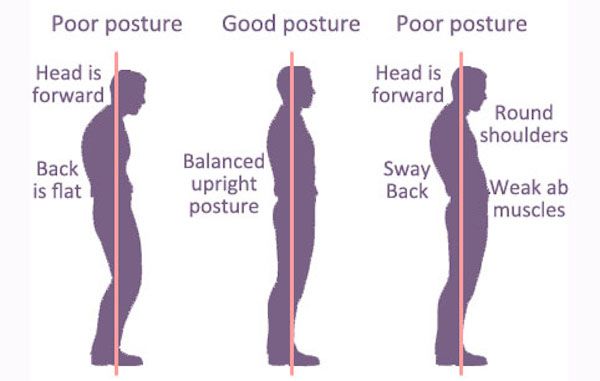Blood Flow Restriction Training (BFR)
Introduction
Muscle weakness is a typical occurrence in several illnesses and diseases. It has been demonstrated that the most effective way to increase muscle strength and achieve muscle hypertrophy is through high-load resistance training. High-load and high-intensity workouts, however, might not be therapeutically suitable in some populations who need muscular strengthening, such as those with chronic pain or patients recovering from surgery. Illnesses can cause a reduction of muscular mass, such as cancer, Human
HIV, diabetes, and COPD are three conditions that may benefit from muscular growth and strengthening but cannot handle demanding or high-intensity exercise.
Blood flow restriction (BFR) training is a method that mimics the effects of high-intensity training by combining low-intensity exercise with blood flow obstruction. Although it has been around for a while in the gym, its application in therapeutic settings is growing.
Training for Blood Flow Restriction (BFR)
BFR training, often referred to as KAATSU training, was first created in Japan in the 1960s. A pneumatic cuff, often known as a tourniquet, is applied proximally to the muscle that is being exercised. It can be used on the limbs that are higher or lower.
The next step is to inflate the cuff to a certain pressure in order to achieve both total and partial venous blockage. After that, the patient is instructed to undertake resistance training with high repetitions (15–30) each set and brief rest intervals (30 seconds) between sets, all at a low intensity of 20–30% of 1 repetition maximum (1RM).
Physiology/Mechanism of Action
It’s critical to comprehend BFR’s mode of action before delving into its applications and useful implementation tips. Though several theories have been put out, the current consensus is that mechanical strain from exercise or resistance training combined with metabolic stress from vascular occlusion produces synergistic improvements in strength and hypertrophy in muscles.
Metabolites, hormonal variations, cell-to-cell communication, cellular enlargement, and intracellular signaling pathways have all been linked at the cellular level. Because BFR has relatively ischemia and hypoxic circumstances, metabolites—which build up during exercise and are known mediators of muscle hypertrophy—are magnified. The fact that BFR at low loads has recruitment identical to high load resistance training suggests that they cause early, peripherally mediated fatigue, which leads to increased recruitment of motor units. Furthermore, under BFR settings, type II fast-twitch muscle fibers—which are typically only recruited preferentially at higher intensities—are engaged at lower loads, which explains why low-load BFR results in greater muscular growth than comparable low-load exercise alone.
Nevertheless, muscles far from the occlusion site do not exhibit increased recruitment of motor units. More proximal muscle groups (deltoid/rotator cuff shoulder, pectoralis major, and gluteus maximus) have been demonstrated to have higher levels of recruitment in both upper- and lower-extremity BFR as compared to controls. It is believed that this happens as a result of the early exhaustion of synchronous muscle groups far from the occlusion site. This has significant consequences for the use of BFR following operations or accidents in which proximal tourniquet application is not possible.
A possible explanation for the supraphysiologic effects of BFR exercise is the proliferation of multipotent satellite cells inside the connective tissue of muscles, which are responsible for muscle development and regeneration. Despite the early belief that satellite cells could only be activated during high-resistance training, BFR promotes the proliferation of these cells even at moderate loads, leading to increases in muscle protein synthesis, myonuclei content, myofiber size, and muscular strength.
It has also been shown that several noteworthy cell signaling pathways mediate the physiological changes observed during and following BFR.
routes. The effects of BFR appear to be primarily driven by the stimulation of protein translation via the mechanistic target of the rapamycin pathway, which is crucial for muscle protein synthesis along with hypertrophy. In contrast, myostatin, a negative regulator of muscle growth and a promoter of muscle fibrosis, has been shown to be downregulated following BFR.
Even while the precise role played by each mechanistic route is still unclear, the knowledge that is already available provides valuable guidance for a future study aimed at optimizing rehabilitation efforts…..
BFR and Strength Training
- Knowing the Physiology of Increased Muscle Mass
- The increase in both the muscle’s diameter and the protein content of its fibers is known as muscular hypertrophy. Strength increases are closely correlated with increases in the muscle’s cross-sectional area.
The two main causes of muscular hypertrophy are muscle tension as well as metabolic stress.
- Metabolic Stress and Mechanical Tension
- Anabolic hormone levels are more concentrated when a muscle is subjected to mechanical stress. Muscle growth may come from increased anabolic hormones and protein metabolism brought on by the activation of myogenic stem cells.
Whenever a muscle experiences metabolic stress, hormones are released, there is hypoxia, and there is cell swelling. all of these elements have a role in the anabolism of muscle tissue.
Activation of myogenic stem cells
- Myogenesis
Satellite cells, or myogenic stem cells, are located in the space between the myofibre’s plasma membrane and basal lamina. They are typically dormant, but when muscles are injured or tense, they become active. These cells are in charge of both the development of new muscle fibers and the mending of damaged ones.
Release of hormones
HGH function
Human growth hormone is significantly increased by any type of exercise, whether it be aerobic or resistance (HGH). Growth hormone and insulin-like growth factors are what cause the increased synthesis of collagen during exercise, which facilitates muscle repair.
Although growth hormone does not directly induce muscular hypertrophy, it may promote muscle recovery, which may speed up the process of building stronger muscles. Growth hormone is released at an even higher rate when hydrogen ions and lactate build up, as occurs during hypoxic training, for example.
It has been demonstrated that high-intensity exercise downregulates myostatin, creating the ideal conditions for muscle growth to take place. In muscle tissue, myostatin regulates and suppresses cell proliferation. In order for muscle growth to happen, it must be practically shut off.
Hypoxia
Blood vessels inside the trained muscles are compressed as a result of resistance exercise. Because the muscle receives less oxygen as a result, a hypoxic environment results. Hypoxia-inducible factor (HIF-1α) is activated as a result of hypoxia. Lactate generation and anaerobic lactic metabolism both rise as a result.
Cell Swelling
Cell swelling happens when there is a buildup of metabolites and blood pooling. Muscle growth is the outcome of an anabolic response brought on by this cell enlargement The mechanical strain that results from the cell enlargement may activate the myogenic stem cells, as was previously mentioned.
Blood Flow Restriction’s Effects on Muscle Strength
BFR training uses a cuff to simulate a hypoxic environment in order to replicate the effects of high-intensity exercise. Once the cuff has been placed close to the muscle being exercised, low-intensity exercises can be performed.
The BFR training and low-intensity exercise will result in the same physiological adaptations to the muscle (e.g., the release of hormones, hypoxia, and cell swelling) as would occur with high-intensity exercise given that the outflow of blood to be limited employing the cuff, allowing blood with a low oxygen content to collect and an increase in protons and lactic acid.
When low-intensity BFR training is combined with regular low-intensity exercise, the muscular circumference increases.
(1) Muscle cell swelling is caused by low-intensity BFR (LI-BFR), which raises the water content of the cells. Fast-twitch muscle fiber recruitment is also accelerated by it. Additionally, it is predicted that once the cuff is taken out, hyperemia—an excess of blood in the blood vessels—will develop, which will exacerbate the swelling of the cells.
It has been demonstrated that 4-6 weeks of short-duration, low-intensity BFR training results in a 10–20% gain in muscular strength.
These improvements matched the gains achieved from high-intensity exercise in the absence of BFR.
a comparison of two types of intensity: (1) high, (2) low, (3) high and low with BFR, and (4) low intensity with BFR. Although torque, muscle activations, and muscular endurance increased with all four training regimens over the course of six weeks, the high intensity (group 1) and BFR (groups 3 and 4) had the largest effect sizes and were similar to one another.
Equipment
BFR Cuff
Applying a tourniquet to a limb is necessary for BFR. When performing workouts, the cuff must be tightened to a certain pressure that obstructs venous flow while maintaining arterial flow.
To get this effect, gym settings have employed basic equipment like surgical tubing or elastic bands.
Since you cannot keep an eye on the degree of blood flow obstruction, these are not recommended. Additionally, a narrow diameter may result in tissue injury from excessive local pressure.
BFR Cuff Width
If BFR is applied correctly, a wide cuff is desirable. Typically, 10–12 cm cuffs are utilized. Perhaps the optimal cuff width to allow for uniform restriction is 15 cm. With a proximal to distal narrowing, modern cuffs are designed to match the natural curve of the arm or thigh. For improved fit, there are additional limb-specific cuffs for the upper and lower extremities.
BFR Cuff Material
Nylon or elastic can be used to create BFR cuffs. Elastic usually makes the narrower cuffs, whereas nylon makes the broader ones. In contrast to nylon cuffs, elastic cuffs have a starting pressure even before the cuff is inflated, which affects how well they may restrict blood flow.
Compared to nylon cuffs, elastic cuffs have been demonstrated to offer a noticeably higher arterial occlusion pressure.
BFR Cuff Pressure
Various techniques for prescribing cuff pressure in blood flow restriction:
a baseline pressure (180 mmHg), which is applied to all patients; a pressure in relation to the patient’s systolic blood pressure, such as 1.2 or 1.5 times higher than systolic blood pressure; a pressure in relation to the patient’s circumference around the thighs.
Because various pressures obstruct the quantity of blood flow for all people under the same conditions, it is best to employ a pressure that is customized to each patient.
A plethysmography or Doppler ultrasonography can be used to measure the blood flow to the affected limb. When the cuff is fully inflated, the arterial blood flow is entirely blocked. This pressure is referred to as artery occlusion pressure (AOP) or limb occlusion pressure (LOP). Next, the cuff pressure is computed as a percentage of the LOP, which is typically in the range of 40% to 80%.
It is best to utilize this strategy to make sure patients are exercising at the right pressure and with the right kind of cuff. In addition to being safer, it ensures that the exercise pressure is just right—not too high to injure tissue, nor too low to be ineffectual.
The breadth of the cuff and the size of the limb it is placed on determine how much pressure it applies.
The secret to BFR is maintaining arterial input while maintaining a high enough pressure to prevent venous return and permit blood pooling. BFR has also been done using perceived wrap tightness, which is measured on a scale of 0 to 10. Wilson et al. (2013) discovered that while allowing arterial inflow, a perceived wrap tightness of seven out of ten led to complete venous blockage.
Procedure
- Upper Limb: The upper arm is where the tourniquet is applied. 50% of the arterial blood flow and 100% of the venous flow are restricted by the inflated cuff.
- Lower limb: The upper thigh is where the tourniquet is applied. When the cuff is inflated, 100% of the venous and 80% of the arterial blood flow is blocked. Normal exercises are carried out at a rate of 20–30% of 1RM once the cuff has been inflated to the appropriate pressure.
Is exercising with blood flow restriction safe?
Although there are some situations in which BFR training wouldn’t be advised, all three experts concur that most people can complete it safely. The following medical issues make BFR training inappropriate:
- Cancer.
- Blood clotting issues.
- Bone fracture.
- Infection.
- Pregnancy.
Dempers advises consulting with an expert who can instruct you in the safe and efficient usage of BFR bands. Seek out a person who is capable of taking your medical history. After that, you can be certain that you don’t have any medical issues that would make BFR training risky.
Exercise Prescription
The recommended level of exercise for bone mineral density reduction (BFR) changes depending on whether it is applied during strength training (BFR-RE), aerobic training (BFR-AE), or passively (P-BFR).
- Model of exercise prescription with BFR-RE
BFR-RE (resistance training)
Model of exercise prescription with BFR-AE
Resistance exercise should preferably be done two to four times a week for the best benefits. Although it is theoretically possible to perform strength training with BFR every day, doing so may not be the ideal long-term plan. Instead, training 1-2 times per day should only be done for brief intervals of 1-3 weeks. For strength training, BFR-RE exercises are usually performed on a single joint.
Although BFR-RE can cause muscle growth in as little as three weeks, most studies recommend lengthier training periods of over three weeks.
It has been demonstrated that a load of 20–40% 1RM consistently results in muscle adaptations for BFR-RE.
- 75 repetitions spread over 4 sets is the most often utilized training volume in the literature.
- In between sets, there are often 30 to 60 seconds of rest.
- To collect the metabolites, it’s critical to keep the cuff inflated throughout the rest intervals. Although intermittent pressure can be used, constant pressure works better.
Exercise Prescription Model Using P-BFR
The size of the limb, the soft tissue underneath, the breadth of the cuff, and the device being used all affect how much pressure is required to stop blood flow in the limb. Depending on whether it is an upper or lower limb, the arterial occlusion pressure that is given should range from 40% to 80%.
BFR-AE (aerobic training)
Although BFR may be used during aerobic activity, it is often used during walking or cycling in studies. Maintaining cuff pressures during BFR-AE is a little trickier, and there isn’t much research on the subject. Furthermore, there is no proof that BFR training enhances an athlete’s aerobic capacity or performance.
P-BFR (passively without exercise)
There isn’t much study on BFR that is administered passively—that is, without any activity. It has, nevertheless, demonstrated promising outcomes in minimizing muscle atrophy following ACL surgery. There are safety concerns since the investigations did not employ standardized pressures and because some of the pressures were high enough to potentially totally obstruct blood flow. P-BFR may be helpful for people recovering from surgery, although further study is required in this area.
Benefits of using blood flow restriction bands
Benefits of using BFR bands include:
- grows muscular mass more quickly than with regular exercise.
- produces lifting improvements equivalent to those of standard training with 20% to 30% less weight or repetitions.
- Reduced effect of lifting on tendons and joints.
- Stops the loss of muscle in immobile individuals
Side Effects
Numbness, stiffness and discomfort, delayed onset muscular soreness, fainting, and dizziness have all been reported as adverse effects of BFR workouts.
Contraindications
Before using BFR, all patients should have their risks and contraindications to tourniquet usage evaluated.
- Individuals with impaired circulatory function, obesity, diabetes, arterial calcification, sickle cell trait, severe hypertension, or renal impairment may be more susceptible to negative reactions.
- Venous thromboembolism, peripheral vascular compromise, sickle cell anemia, infection of the extremities, lymphadenectomy, cancer or tumor, extremity with dialysis access, acidosis, open fracture, elevated intracranial pressure, vascular grafts, or drugs that raise the risk of clotting are possible contraindications to take into account.
Safety Implications
The safety consequences of BFR are not entirely clear. The two primary safety concerns are muscle injury and the development of venous thromboembolism, which includes deep vein thrombosis and pulmonary embolism. The following discusses many safety problems and their implications:
Blood hemostasis and BFR
Blood can clot via a variety of coagulation mechanisms. The fibrinolytic system contains part of the mechanism that controls blood coagulation. Fibrinolysis can assist in stopping a blood clot from becoming a venous thromboembolism.
Da Cunha Nascimento et al. conducted a systematic review in 2019 that looked at both the short- and long-term effects on blood hemostasis, or the equilibrium between fibrinolysis and coagulation. It came to the conclusion that further field study is required before firm recommendations can be made.
They expressed concerns over the following in this review:
Not all adverse effects were documented.
- There was no indication of the individual’s degree of previous training, which has a substantial impact on the physiological reaction.
- The pressures used in the research varied greatly, and the occlusion criteria and techniques used varied as well.
- The majority of research was done in the short term, and long-term effects were not assessed.
- The investigations did not include participants at risk for diabetes, obesity, thromboembolic diseases, or impaired fibrinolysis. Instead, they focused on healthy participants.
Conclusion
BFR treatment has additional advantages for pain and cardiovascular fitness in addition to stimulating muscle growth through a synergistic response to metabolic load and mechanical tension. There is potential for accelerated healing with novel types of BFR and growing uses in sports and postoperative patients. Optimizing its efficacy and prescription will need continued adherence to rehabilitation standards and investigation of BFR physiology and varied uses.
FAQs
Does blood flow restriction training work?
Indeed, BFR can cause muscular growth at considerably lower loads than are usually applied, which will result in greater increases in muscle strength.
What is blood flow restriction training?
During resistance training or exercise, blood flow restriction, or BFR, is a growing rehabilitation method that reduces arterial inflow and obstructs venous outflow using a tourniquet.
What are the risks of BFR training?
Increased blood pressure, aberrant cardiovascular reactions, and compromised vascular health can all be brought on by BFRT. Additionally, there are significant issues with the use of BFRT for those who have a history of cardiovascular illness, such as those who have diabetes, hypertension, or chronic renal disease.
Does BFR training increase muscle?
BFR training results in increases in strength and muscular hypertrophy that are comparable to or greater than those obtained from moderate-to-high-load resistance training. It also enhances hypertrophy and strength more than low-load resistance training alone.
Who should not do blood flow restriction training?
Exercises involving blood flow restriction should be avoided by those with hypertension or other vascular diseases since BFRT affects vasculature and muscle development hormones.
References
- Blood Flow Restriction Training. Physiopedia. https://www.physio-pedia.com/Blood_Flow_Restriction_Training
- Use Blood Flow Restriction Training to Exercise Wisely Rather Than Hardly. Cleveland Clinic. https://health.clevelandclinic.org/blood-flow-restriction-training
- Blood Flow Restriction Training. Journal of Athletic Training. https://doi.org/10.4085/418-20







